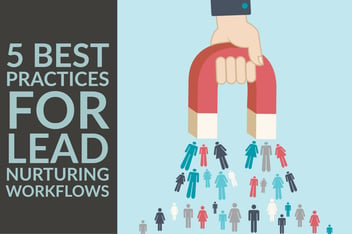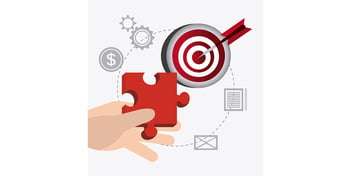5 Secrets to Humanizing Your Lead Nurturing Emails

We’ve detailed the benefits of using automated lead nurturing to initiate and continue a conversation with website visitors who convert into leads:
And, of course, providing instant response to interested visitors at a time when 25-50 percent of sales go to the vendor that responds first.
While much of the beauty of lead nurturing workflows is their automation, reducing the hands-on time needed to continue connections with leads, it is important not to let that automation turn your emails into anonymous messages from an automaton.
Personalize and humanize your lead nurturing emails to show leads you really are listening.
How to Humanize Your Lead Nurturing Emails
1. Send emails from a real person.
Who are you more likely to open an email from: “ABC Corp.” or “Jenny Johnson”? Don’t send lead nurturing emails from a generic email address such as marketing@ABCCompany.com. Instead, send them from a real person, with a “reply-to” address that works.
This helps your lead nurturing emails feel more like a two-way conversation and that you are ready to hear from them. All they have to do is hit reply, and they will be connected to a real person. (Just make sure that real person follows through when someone does reply.)
Who should you choose? Likely candidates are your inside sales specialist who covers the product line that matches the lead nurturing workflow, the outside sales representative who covers the lead’s geographic area, or even the director of marketing.
2. Address the recipient by name.
Since most leads convert by completing a landing page form to access some type of offer, in most cases you will have their name, in addition to their email address. (Find more here on what information to request in a landing page form.)
Once you have their name, use it. Opening an email with “Hi, John!” increases click-through rates over a more general “Hello.”
3. Include their company name in the message.
As leads move further through the sales funnel, accessing more specific decision-making material, your landing pages should request more information (but don’t ask them to re-enter information you already have - see Using Dynamic Content in Marketing).
With additional information, such as the name of the lead’s company, you can create lead nurturing emails that place the lead and his or her company front and center.
“John, is ACompany ready to compare options for software? I think I have the solution to ACompany’s need for easy-to-use, comprehensive data management that will mesh with your current system and prepare your business for growth in the future.”
4. Reference their past interactions with your company or website.
Remind your leads of why they are receiving emails from you, and show them that you are paying attention. When you reference how you the lead first found out about you, or what their most recent interaction was with your website, you reinforce the connection that they initiated.
“Hi, John!
Thanks for signing up for our weekly email at the Industry Event 2016 last month. Here is the first report we promised you.”
Or:
“Hello, Jenny,
I just wanted to find out if you are happy with the lead qualification checklist you downloaded from our website. I hope it has helped your marketing and sales teams define the point at which a lead is ready to move on to sales.”
Once you’ve established that relationship and how helpful your information can be, then move on to offering them additional content that moves leads closer to a sale.
5. Write emails that are authentic and approachable.
Your specific approach and wording is going to vary depending on your target market and industry—business financial services will use a different tone than tourism businesses specializing in travel for young people—but it should be conversational.
Don’t fall into hyperbole, exaggerated claims and lots of exclamation points. Just offer what you have and what you know in a way that is authentic. That doesn’t mean you can’t highlight your expertise, but this isn’t the place for “the greatest!”
More resources on lead nurturing emails and personalizing content:
By creating lead nurturing workflows and emails that are a natural extension of your desire to help your prospects find solutions to their problems, and writing those emails with a personalized touch, you become not just another marketer, but a trusted partner.
Find more best practices for writing lead nurturing emails in our Introduction to Lead Nurturing ebook. It’s free for you to download today.
-1.png?width=1652&height=294&name=Jones(RGB)-1.png)












